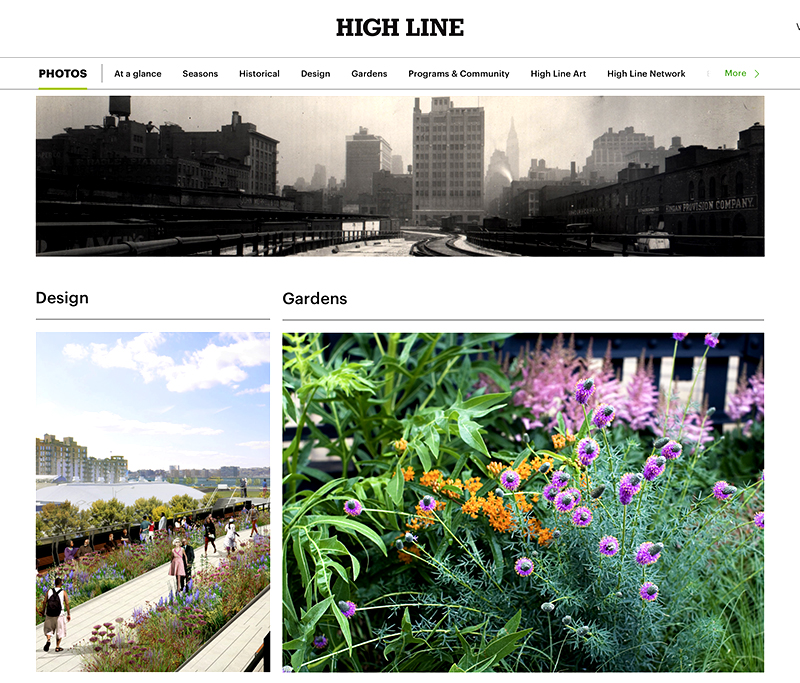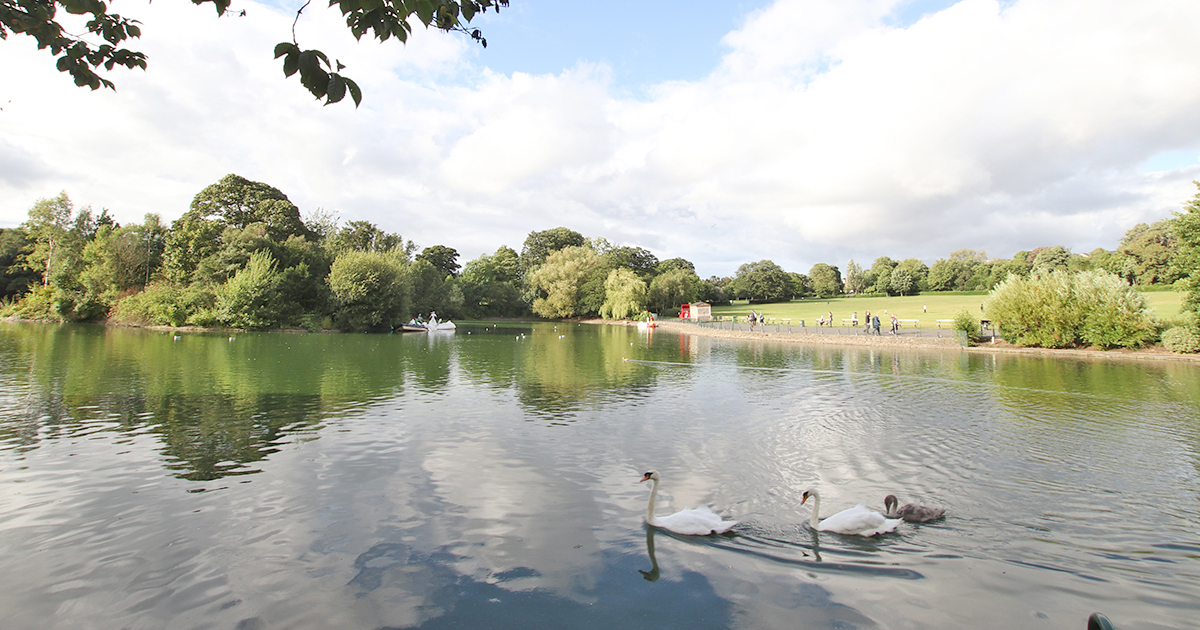Journal

Hundreds of Kittiwake nests
destroyed in Tromsø city center in Norway
66% of all the nests monitored by the Kittiwalkers in Tromsø city center in Norway have been lost. This is 211 nests. Outside their monitoring area, more nests have been destroyed (Kittiwake hotels dismantled; building torn down). In total, 582 nests have been lost since the last breeding season.
» The Kittiwalkers are a grassroots initiative led by the nonprofit » Rissa Citizen Science and powered by volunteers who believe that peaceful coexistence with kittiwakes in Tromsø is both necessary and achievable.
New York – The High Line
A competition to reimagine how the derelict remnants of a transportation system in New York could be repurposed and celebrated was promoted. Over time this helped inspire fresh ideas and raise awareness. Whilst on the surface this visually appeared very creative and artistic it was filled with memories from earlier generations when transport and industry were very different.

Re-wilding had already started to naturally reclaim much of the left-over structures as decades had passed since they were retired. What sprouted from the competition was a desire to make wishes come true. To redevelop the landscape. This followed more realistic routes which carefully considered the potential benefits for the local economy, the Health & Well-being of residents and visitors and biodiversity.
The key foundations included:
- Identifying & Mapping the boundaries of any potential land that could be repurposed.
- Considering options available such
as renovation or rebuilding - Linking in with businesses that owned sites below and adjacent to the structures.
In a few sentences …
Despite the massive investment for the New York High Line development, the return economically has been huge. Whilst it has cost approx. 200 million to develop, the economic benefits, have reached close to 1 billion. This demonstrates balance can be achieved; whilst at the same time bringing financial benefits. This is in New York, a vast urban environment. Ambitious and a huge dream, that over the past 20 years has evolved into an amazing reality.
Tyneside – Newcastle & Gateshead
The Tyne Bridge was not designed or built for modern day cars. It does and was intended to connect the city of Newcastle and the Town of Gateshead. Work is currently being planned to demolish the bypass that is suffering decay on the Gateshead side of the river and inspections are on-going for the Newcastle Central Motorway; both of which were built in the 70s. Reaching from Saltwell Park in Gateshead to Exhibition Park and the Town Moor in Newcastle, the bypass in Gateshead and the Newcastle Central Motorway connect wildlife and communities. Large portions of traffic have already been re-routed from the Tyne Bridge which has contributed towards a reduction in air pollution.

A view from Newcastle Town Moor
looking towards Exhibition Park
Newcastle City Council –
Climate & Transport Strategy
The recent climate change events by Newcastle City Council included questionnaires where lots of the questions were related to what they were already doing. Therefore, would any feedback or outcomes result in anything new?
What they did in New York was very different. What is needed is imagination and not more of the same. Without change, what will the future look like for the Newcastle and Gateshead urban environments? As Newcastle City Council attracts thousands of cars into the city centre it’s generating an income from car parking charges, that they may struggle to replace if its lost. They’re benefits to Health & Well-being and biodiversity by relocating such car parks out of town, as it helps reduce congestion and improves air quality. Residents and visitors also don’t like sitting for hours in heavy traffic. Edinburgh, York and Durham benefit from amazing park and rides.
Newcastle and Gateshead have a variety of venues that attract large audiences, and significant efforts have been made by councillors and staff to attract more visitors into the area. We have seen parks commercialised, talks of a larger football club, more music venues and city centre space rented out during seasonal holiday dates. These all put pressure on the local transport system and have an impact on air quality and congestion periods where commuters are flowing through their daily routine.
Has there been consideration and planning for the impact this all has now or in the future on the transport system, Health & Well-being and especially biodiversity at a time when are nature is crisis? So many blaming each other about the state of the local transport system. Does attracting a larger audience contribute towards accelerating the decay of aging transport infrastructure?
Options could be considered to re-design the local transport system. This would be especially important with:
-
- access becoming more limited on the Gateshead side of the river for vehicles
- rising air pollution which impacts Health & Well-being
- an ageing Tyne Bridge which is undergoing a renovation not a rebuild.
The Tyne Bridge could be allowed to retire gracefully
remaining for essential access and as a tourism attraction - The national increase in the use of cars with public transport routes vanishing.
As happened across in America and New York a competition could be held and promoted.
This could feature options following the removal of both the Gateshead Bypass and Newcastle Central Motorway. As highlighted by members from Newcastle University there are further areas ripe for such redevelopment around Manors, Newcastle Quayside and Heaton. New transport infrastructure such as trams or cycle routes could flow from these and areas which are suitable for parks and rides could be identified.
These could link up with successful initiatives, such as:
- the rewilding and re-purposing of the old railway track into a cycleway
between Wallsend and St Peter’s and St Lawrence Park in Byker. - on-going efforts to enhance the habitats around the City Stadium in Heaton
which flows into Shieldfield and the Ouseburn.
Such a competition could encompass routes travelling into the city linking through to neighbouring communities. Health & well-being, biodiversity and the economic benefits could be headlined.
Saltwell Park in Gateshead

Just like the High Line in New York such projects if realised could also be a wonder to experience.
Entries could be considered for what Newcastle & Gateshead could look like without these changes. As our climate continues to change and whilst our nature is in crisis; Will the residents of Newcastle & Gateshead recognize what is unfolding over the coming years?
Will a local university or organisation rise to the challenge
to organise and promote such a competition?
“Will a local gallery raise their own voice to help host it?”
Helping to support Kittiwake Colonies throughout the UK and beyond
A new national website for Kittiwakes – Launched March 2025
Kittiwakes.org shares information regarding a selection of breeding colonies of Kittiwakes within the UK and beyond. There is a focus on such colonies where pairs have moved away from building their nests amongst traditional coastal sites and have instead opted to move into our towns and cities.
Our nature is in crisis!
If larger portions of Kittiwakes continue to move away from their coastal colonies and instead choose to nest more inland, then the need to raise the flag and campaign to help support them will rise. Kittiwakes are also just one species amongst many that are struggling at this time. Not just with more severe weather patterns, access to food sources and pollution; but also, with » Avian Flu






















